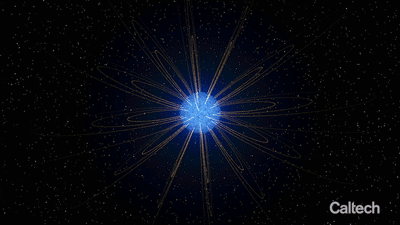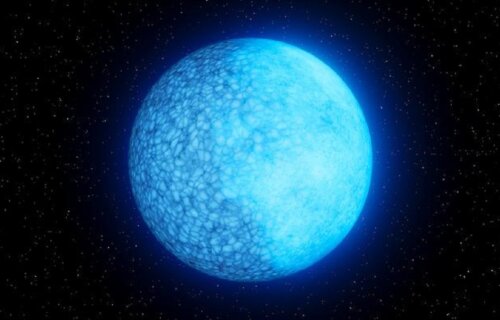PASADENA, Calif. — You’ve probably heard of a “two-faced” person — but what about a two-faced star in outer space? Astronomers have made a fascinating discovery — a peculiar star with two distinct sides, one composed of hydrogen and the other containing helium. The recently found white dwarf has been affectionately named Janus, after the Roman god associated with transitions.
“The surface of the white dwarf completely changes from one side to the other. When I show the observations to people, they are blown away,” says lead author Dr. Ilaria Caiazzo from the California Institute of Technology.
The international team of scientists behind this discovery suggests that we might be witnessing a rare phase of evolution in which a burnt-out star undergoes some sort of transformation.
“Not all, but some white dwarfs transition from being hydrogen- to helium-dominated on their surface. We might have possibly caught one such white dwarf in the act,” Dr. Caiazzo explains in a university release.
This phenomenon could be attributed to the mixing of materials known as convection. On the helium side, which appears “bubbly,” the thin hydrogen layer on the surface has been destroyed, exposing the underlying helium.
Could this happen to our Sun?
White dwarfs are the remnants of stars that were once similar to our Sun. As these stars age, they expand into red giants. Eventually, their outer layers are blown away, leaving behind dense, intensely hot white dwarfs. Our Sun is expected to evolve into a white dwarf in about five billion years.
Janus was discovered using the Zwicky Transient Facility (ZTF) scanner at the Palomar Observatory near San Diego.
The research team had been searching for highly magnetized white dwarfs, which they had previously found using the ZTF. Further investigations revealed that Janus rotates on its axis every 15 minutes, unveiling the striking double-faced nature of the white dwarf.

Scientists employed a spectrometer to analyze the light emitted by the white dwarf, which revealed a range of wavelengths containing chemical signatures. Data indicated the presence of hydrogen when one side of the object was in view, and only helium when the other side came into frame.
After the formation of white dwarfs, their heavier elements sink to their cores, while the lighter elements, such as hydrogen, remain near the surface.
Over time, as the white dwarfs cool, the materials are believed to mix together. In some cases, hydrogen is thought to be diluted and mixed into the interior, leading to a higher prevalence of helium on the surface.
The asymmetric distribution of magnetic fields around cosmic bodies might explain the uneven evolution of the white dwarf’s sides.
“Magnetic fields around cosmic bodies tend to be asymmetric, or stronger on one side,” explains Dr. Caiazzo. “Magnetic fields can prevent the mixing of materials. So, if the magnetic field is stronger on one side, then that side would have less mixing and thus more hydrogen.”

Additionally, magnetic fields may affect the pressure and density of atmospheric gases.
“The magnetic fields may lead to lower gas pressures in the atmosphere, and this may allow a hydrogen ‘ocean’ to form where the magnetic fields are strongest,” says co-author Professor James Fuller, also from Caltech. “We don’t know which of these theories are correct, but we can’t think of any other way to explain the asymmetric sides without magnetic fields.”
The team hopes to discover more white dwarfs similar to Janus through the ZTF’s sky survey.
“ZTF is very good at finding strange objects,” says Dr. Caiazzo.
Future surveys are expected to make the identification of variable white dwarfs even more feasible.
The findings are published in the journal Nature.
South West News Service writer Mark Waghorn contributed to this report.

